We haven’t put much energy into our Facebook page so far, but for the sake of our own self-respect we’d like to increase our likes count (it’s currently around 70).
So we’re going to try some Facebook ads. We want to reach 200 likes for starters — a nice round tally.
I’ve used Facebook ads before. I found it simple to use and pretty good value. If you’re new to it, we’ll try to guide you through the process in this post. We’ll also share our own results.
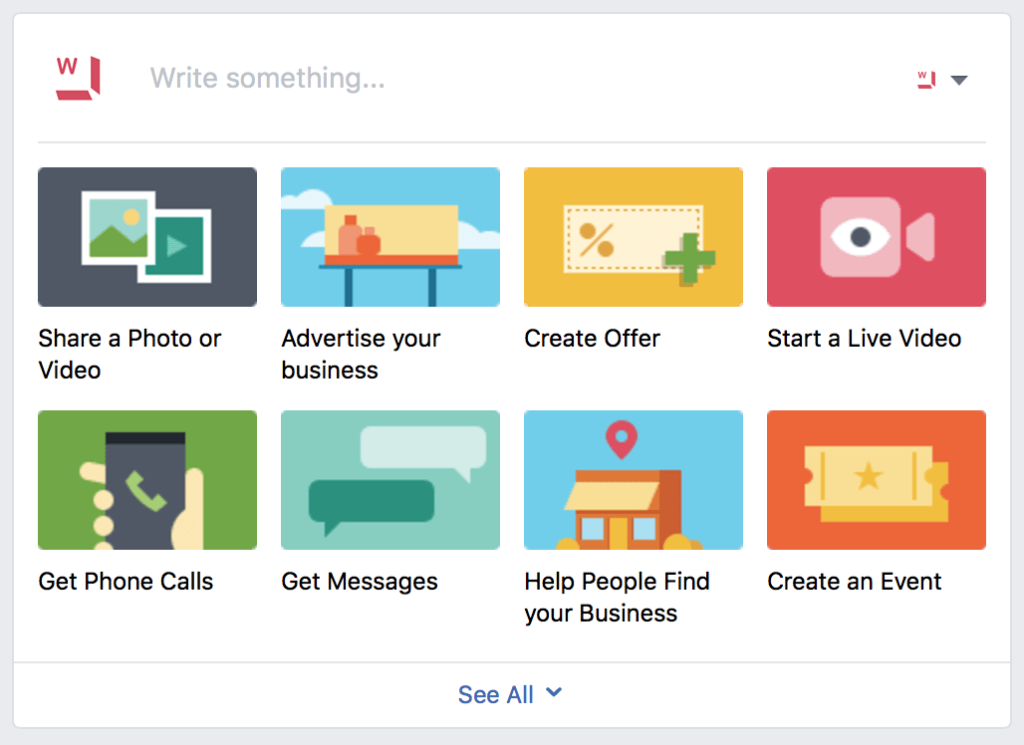
As I said above, our goal here is to increase our page likes. This is because we don’t expect many people are looking for writers on Facebook. We just want a respectable number of likes, to show anyone who visits that our brand (which is new) is in good health. Your goal could be different, like getting clicks through to your website or more phone calls.
(If you feel like helping us, you could go to our Facebook page and click Like. Or just keep reading, no pressure!)
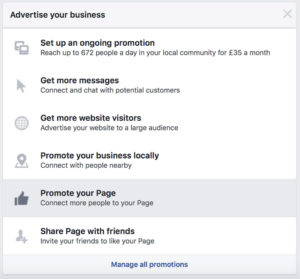
Thinking about who to target and creating our ad
The next step after picking a type of advert is to decide who we want our advert to reach.
Facebook doesn’t ask us this directly (yet), but it does ask us to provide our ‘Ad creative’ at this point. We should therefore think about who our audience is, so we can write ad copy/text and choose a picture or video that will appeal to them.
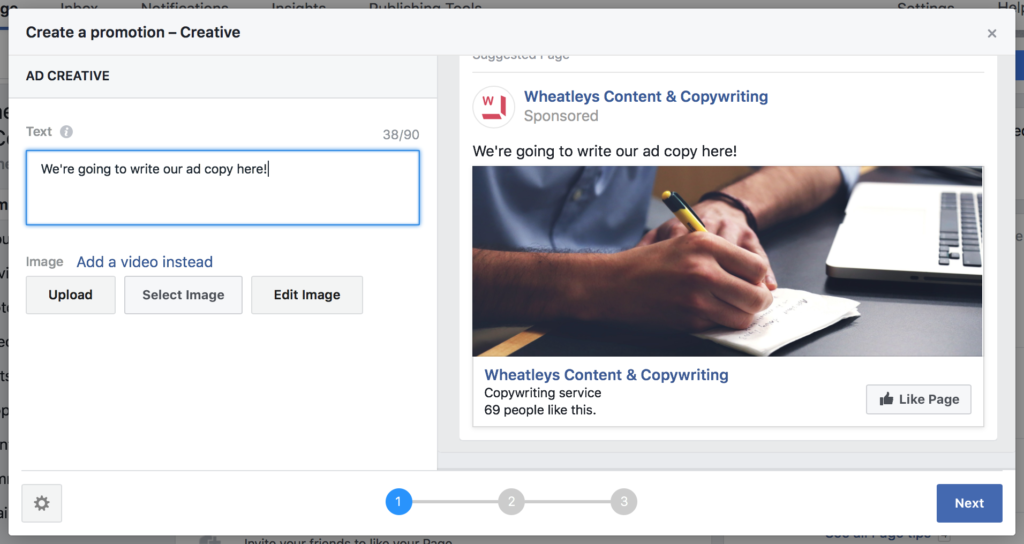
We decided we’d go for small businesses in our local area of Manchester and the North West of England, since we’re focused on SME clients and we’d like to be better known in the area. We don’t really need to be more specific or scientific than this at the moment, since we’re just having a trial run.
We didn’t spend more than a few minutes on our creative, again because this is just an experiment. For our ad copy we went with:
Discover a top marketing partner on your doorstep. Like us for useful tips and insights.
We also added an image with text mentioning Manchester, to give some context to the “on your doorstep” bit. Here’s what our ad looked like:
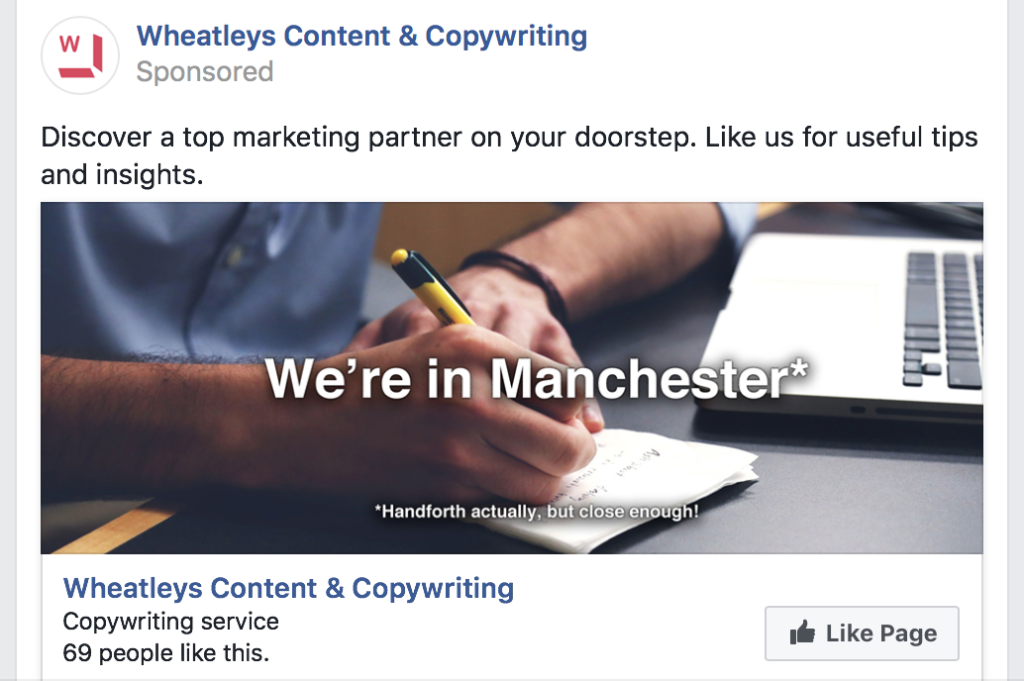
Defining our target audience
With our ad ready, we click Next and see a new form that asks us to choose our audience. Apparently our audience selection is “great” — and we’ve not even done anything yet.
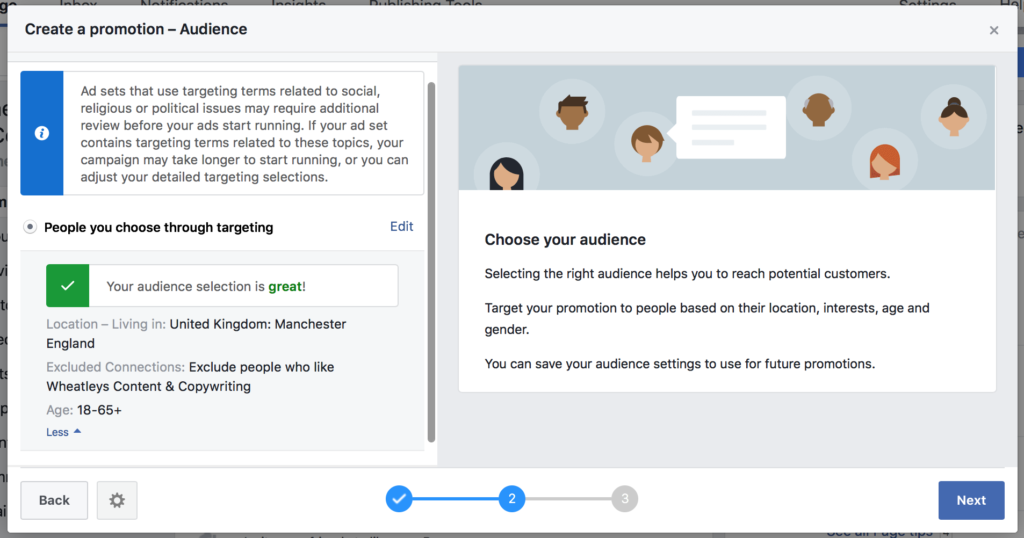
We still want to refine our audience a bit though. One of the brilliant (or dangerous?) things about Facebook ads is how easy it is to target very specific groups of people based on their age, gender, location and interests.
So we click Edit next to where it says ‘People you choose through targeting’ and we make some tweaks:
- We change our age range to 23-55, since we figure people in this range are most likely to have their own business. (This isn’t based on data and we don’t mean to be ageist. You can of course be an amazing businessperson if you’re older or younger than this!)
- We include people in Manchester, Salford, Bolton and Stockport.
- We use ‘Detailed targeting’ to only target people who say they’re interested in ‘Copywriting’, ‘Small business’, ‘Entrepreneurship’, ‘Content marketing’, ‘Digital marketing’ and plain-old ‘Marketing’.
Facebook now tells us our potential audience size is 520,000 people — and that we’re still doing “great!”
Setting our £10 spend
As I mentioned in the title, we’re only going to spend £10 on this experiment.
We just want to dip our toe because…
- this isn’t a high priority activity for us
- we don’t know what kind of results we’ll get for our money yet
- we don’t know how effective our dashed-off creative will be
So we may as well start small, then increase the spend later if we want to.
Thankfully it’s easy to set a maximum spend. After clicking Next on the audience form, we see a new step called ‘Budget and Duration’. We set our daily budget to £1.43 and our duration to 7 days, and that adds up to £10.01 (because 10 / 7 = 1.428).
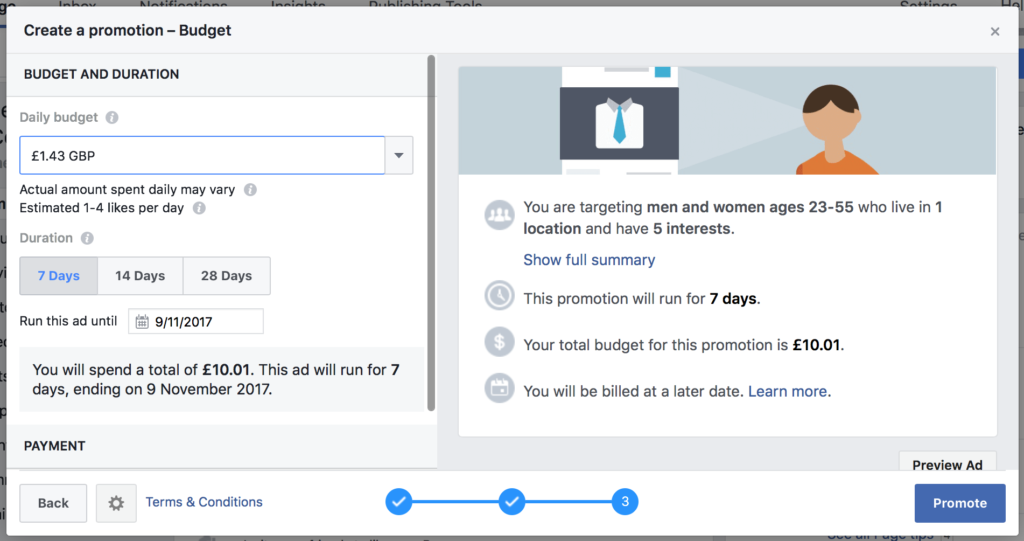
Facebook now tells us we can expect 1-4 likes per day. This means we could get only 7 new likes for the £10 we’re spending. Or we could get a maximum of 28 new likes for our tenner. That will depend on how good the advert is… and let’s face it, ours is nothing Earth-shattering!
Now all we need to do is click the big blue ‘Promote’ button, sit back and wait for the results. (Note: you also need to set up a payment method. We went with PayPal.)
24 hours later…
After one day we had 4 new likes and had spent £1.71. That’s at the top-end of the prediction Facebook gave us earlier, which is nice. The daily spend is higher than we asked for, though.
Here’s how Facebook shows you data about your promotion:
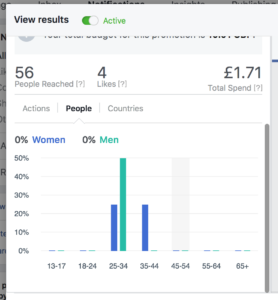
A couple of things to note:
- One of the new likes was from Mexico City and living in Mexico City. That’s a few thousand miles outside our target. I’ve no idea why this happened, but it shows Facebook’s ad targeting is perhaps not as accurate as it should be.
- One of the new likes ‘unliked’ the page shortly afterwards, so our net change is actually +3. You pay for likes whether they stay with you for five years or five seconds.
The results are in… and they’re not great
At the end of our promotion we had gained just 13 new likes for our £10 spend. And not all of those had stuck around!

If you recall, Facebook predicted we’d get between 7 and 28 new likes. We’re within that range. But at 77p per like, I can’t help conclude this campaign has been poor value and a failure. We really want to be at the top end of Facebook’s prediction, getting the biggest value from our spend.
Thankfully, it’s ok to fail if you learn from your mistakes.
So, what did we learn?
We didn’t work hard enough on our creative.
Our target audience, which included small business owners and people interested in marketing, are a savvy group. We should have put more energy into our ad creative if we wanted to win their clicks.
Our target audience didn’t really fit our goal.
I said our campaign goal was simply to increase our total page likes. If that was really the case, we should have selected a demographic known to ‘Like’ pages more often. Instead we got greedy and tried to kill two birds with one stone, targeting people who might also be interested in our service.
The likes we won might be more valuable than if we’d just gone after anything we could get. But we failed to make real progress towards our stated goal of 200 likes.
Winning Facebook likes isn’t as easy as I thought.
This is probably the most useful lesson of all. Facebook advertising is not just a pay-to-win video game. It takes some skill and science, and we now need to think about how to improve on the results of this first experiment.
I’ll be back soon with a new post and a new round of Facebook ad tests. I hope you found this one enlightening.
In the meantime: if you’ve got any useful lessons from your own Facebook ad experiences, we’d love to hear them!
Growing your business?
We’ve got bags of creativity and experience and we’d love to help! Click below to see what we offer for small businesses.
Cover image from https://www.facebook.com/business/products/ads.

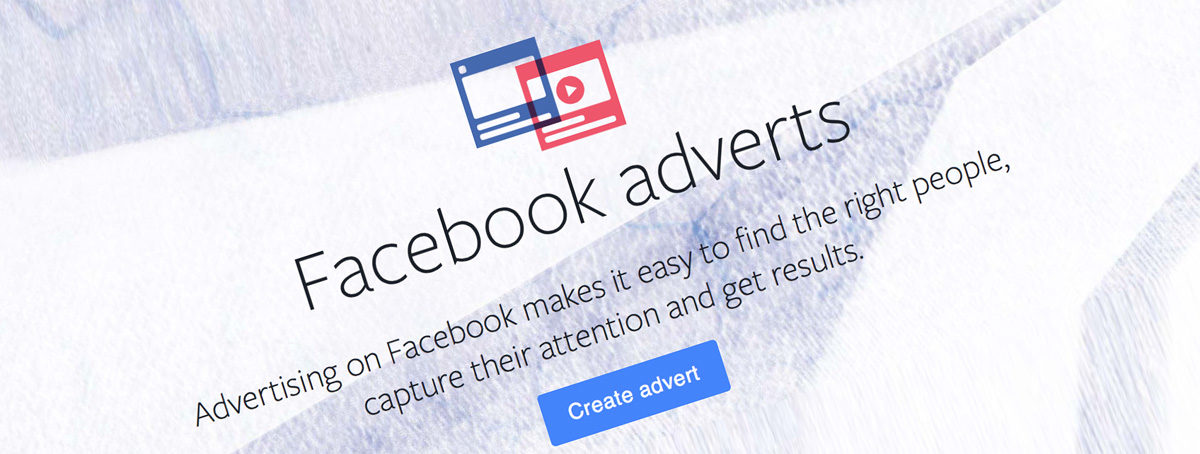
It won’t definitely improve your results, esp on a small spend like this, but you need better creative. Try a special ooffer, we’ve found this appeals to facebookers.